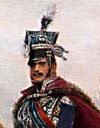 |
| a mixed hills and marshland 'parchment' copy of my terrain boards |
One of the first, best, sets of advice I ever had regarding the miniatures hobby consisted of:
1) choose an era that draws your interest, enough that you could see yourself spending $1000 on the miniatures, rules, terrain etc. - an example of 'era' is: Ancients (3000 bce-500 ce)
2) find a rules set that you are willing to support within that 'era', in my first case this was DBA
3) settle on a scale to start with. Be certain that you can i) afford the minis ii) have the space to store them iii) time to paint and game
4) GET BOTH SIDES FOR AT LEAST ONE BATTLE
 |
| a forested terrain tile, one I made in 1995 |
With that said it ought to come as no surprise that I did so many armies for the 15mm Napoleonic run to continue to support the terrain tiles that I made for DBA. In using the terrain boards in the campaign as I have I also made up some 'parchment' copies of the terrain boards.
The concept for the boards is thus: at least 1 (of 4) must be flat, at least 1 (of 4) must contain a terrain feature, unless a river is going to be used. A river must cross at the center and be run from one side to the other. These are all from DBA. The fun part about such map making is that all of my terrain boards are 'off center' for the terrain bits and so when you spin them you can get a lot of different combinations.
So with the parchment versions of the boards I could create maps that the players could use to plan out the battle formations, and I knew that I could accurately lay out the troops based on the terrain boards.
For the third go round of the campaign these terrain boards continued to do service.
The Order Of Battle was revamped to better reflect the force organization that historically existed, though the players were not required to use it.
 |
| Anglo-Dutch |
 |
| French |
 |
| Prussian |
 | |
| Third game starting positions |
 |
| at Ciney |
| at Huy |
| at Huy AGAIN |
| at Namur |
 |
| web map at game 3 end |
Most unusual strategy ... I think that the Prussian courts would not be so happy about the Anglo-Dutch had this been done historically...
What are your game plan limitations? Do you have any restrictions on the minis you buy?
What have been your strategic experiences in Campaign settings?






















































2 comments:
Sound advice.
I have tried to settle on 15mm for all my periods, but as I have what I classify as nostalgia for 1/72nd I still dabble with that scale and from time to time have an idea that 6mm might be interesting.
DBA is a good set of rules for a quick game and if you have more time, well, you can play it again. Also DBA campaigns can be fun.
Your Waterloo campaign looked interesting. I'm keen to see how the new Blucher rules work out for that campaign.
My biggest challenge is staying focused on the one thing, the next challenge is letting go of things that are obsolete.
There was a time when 15mm looked like the only one for me.
Then I found out how to cast my own miniatures, then Prince August miniatures became a possibility.
Since I could produce my own armies at relatively low cost now, the 25/28mm scale took over.
Combine that with failing eyesight and the painting of 15mm minis becomes less attractive.
Being able to cast my own armies also put Napoleonic armies into practical range.
I have also improved my painting skills and sold off some of the older minis from the collection, including the whole 1805 Prussian army.
The funds generated by this have kept me 'in the game'.
Thank you for your comments Sun of York
Post a Comment